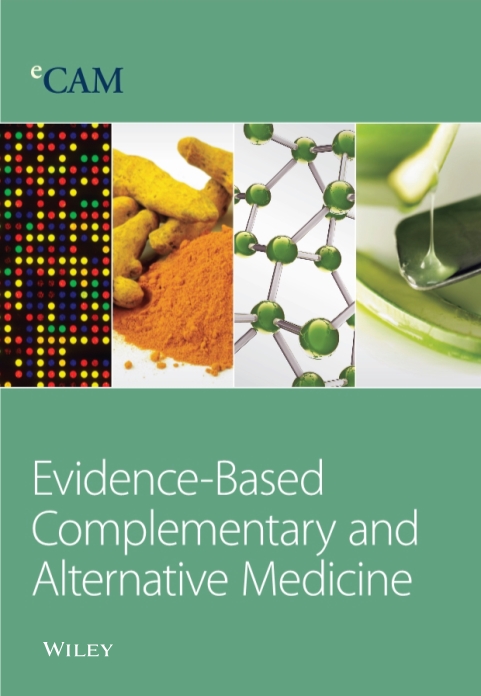Phytochemistry Profile, Antimicrobial and Antitumor Potential of the Methanolic Extract of Tabernaemontana catharinensis A DC and Eragrostis plana NEES
4区 医学
Q2 Medicine
Evidence-based Complementary and Alternative Medicine
Pub Date : 2024-01-03
DOI:10.1155/2024/5513141
引用次数: 0
Abstract
Natural compounds that have the potential to act as antimicrobials and antitumors are a constant search in the field of pharmacotherapy. Eragrostis plana NEES (Poaceae) is a grass with high allelopathic potential. Allelopathy is associated with compounds generated in the primary and secondary metabolism of the plant, which act to protect it from phytopathogens. Tabernaemontana catharinensis A DC (Apocynaceae), a tree in which its leaves and bark are used for the preparation of extracts and infusions that have anti-inflammatory and antinociceptive effects, is attributed to its phytochemical constitution. The objective of this study was to elucidate the phytochemical constitution, the antibacterial potential, the toxicity against immune system cells, hemolytic potential, and antitumor effect of methanolic extracts of E. plana and T. catharinensis. The phytochemical investigation was carried out using the UHPLC-QTOF MS equipment. The antibacterial activity was tested using the broth microdilution plate assay, against Gram-negative and Gram-positive strains, and cytotoxicity assays were performed on human peripheral blood mononuclear cells (PBMC) and in vitro hemolysis. Antitumor activity was performed against the colon cancer cell line (CT26). Results were expressed as mean and standard deviation and analyzed by ANOVA. was considered significant. More than 19 possible phytochemical constituents were identified for each plant, with emphasis on phenolic compounds (acids: vanillic, caffeic, and quinic) and alkaloids (alstovenine, rhyncophylline, amezepine, voacangine, and coronaridine). Both extracts showed antibacterial activity at concentrations below 500 µg/mL and were able to decrease the viability of CT26 at concentrations below 2000 µg/mL, without showing cytotoxic effect on PBMCs and in vitro hemolysis at the highest concentration tested. This is the first report of the activity of E. plana and T. catharinensis extracts against colon cancer cell line (CT26). Studies should be carried out to verify possible molecular targets involved in the antitumor effect in vivo.Tabernaemontana catharinensis A DC 和 Eragrostis plana NEES 甲醇提取物的植物化学概况、抗菌和抗肿瘤潜力
药物疗法领域一直在寻找具有抗菌和抗肿瘤潜力的天然化合物。Eragrostis plana NEES(禾本科)是一种具有很高等位病理学潜力的草。等位异化作用与植物初级和次级代谢过程中产生的化合物有关,这些化合物能保护植物免受植物病原体的侵害。Tabernaemontana catharinensis A DC(天南星科)是一种树,其叶子和树皮可用于制备具有消炎和止痛效果的提取物和浸剂,这归功于其植物化学成分。本研究旨在阐明 E. plana 和 T. catharinensis 的甲醇提取物的植物化学成分、抗菌潜力、对免疫系统细胞的毒性、溶血潜力和抗肿瘤作用。植物化学研究是利用 UHPLC-QTOF MS 设备进行的。使用肉汤微量稀释平板法对革兰氏阴性和革兰氏阳性菌株进行了抗菌活性测试,并对人外周血单核细胞(PBMC)和体外溶血进行了细胞毒性测试。对结肠癌细胞株(CT26)进行了抗肿瘤活性检测。结果以平均值和标准偏差表示,并进行方差分析。每种植物都鉴定出了 19 种以上可能的植物化学成分,重点是酚类化合物(酸:香草酸、咖啡酸和奎宁酸)和生物碱(芒柄花碱、荷叶碱、阿米西平碱、瓦康碱和冕花碱)。这两种提取物在浓度低于 500 微克/毫升时显示出抗菌活性,在浓度低于 2000 微克/毫升时能够降低 CT26 的存活率,在测试的最高浓度下对 PBMC 没有细胞毒性作用,也没有体外溶血作用。这是首次报道 E. plana 和 T. catharinensis 提取物对结肠癌细胞系(CT26)的活性。应开展研究以验证参与体内抗肿瘤作用的可能分子靶点。
本文章由计算机程序翻译,如有差异,请以英文原文为准。
求助全文
约1分钟内获得全文
求助全文
来源期刊
自引率
0.00%
发文量
1983
审稿时长
2.2 months
期刊介绍:
Evidence-Based Complementary and Alternative Medicine (eCAM) is an international, peer-reviewed journal that seeks to understand the sources and to encourage rigorous research in this new, yet ancient world of complementary and alternative medicine.
The journal seeks to apply scientific rigor to the study of complementary and alternative medicine (CAM) modalities, particularly traditional Asian healing systems. eCAM emphasizes health outcome, while documenting biological mechanisms of action. The journal is devoted to the advancement of science in the field of basic research, clinical studies, methodology or scientific theory in diverse areas of Biomedical Sciences. The journal does not consider articles on homeopathy.

 求助内容:
求助内容: 应助结果提醒方式:
应助结果提醒方式:


